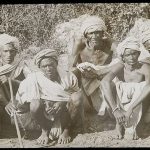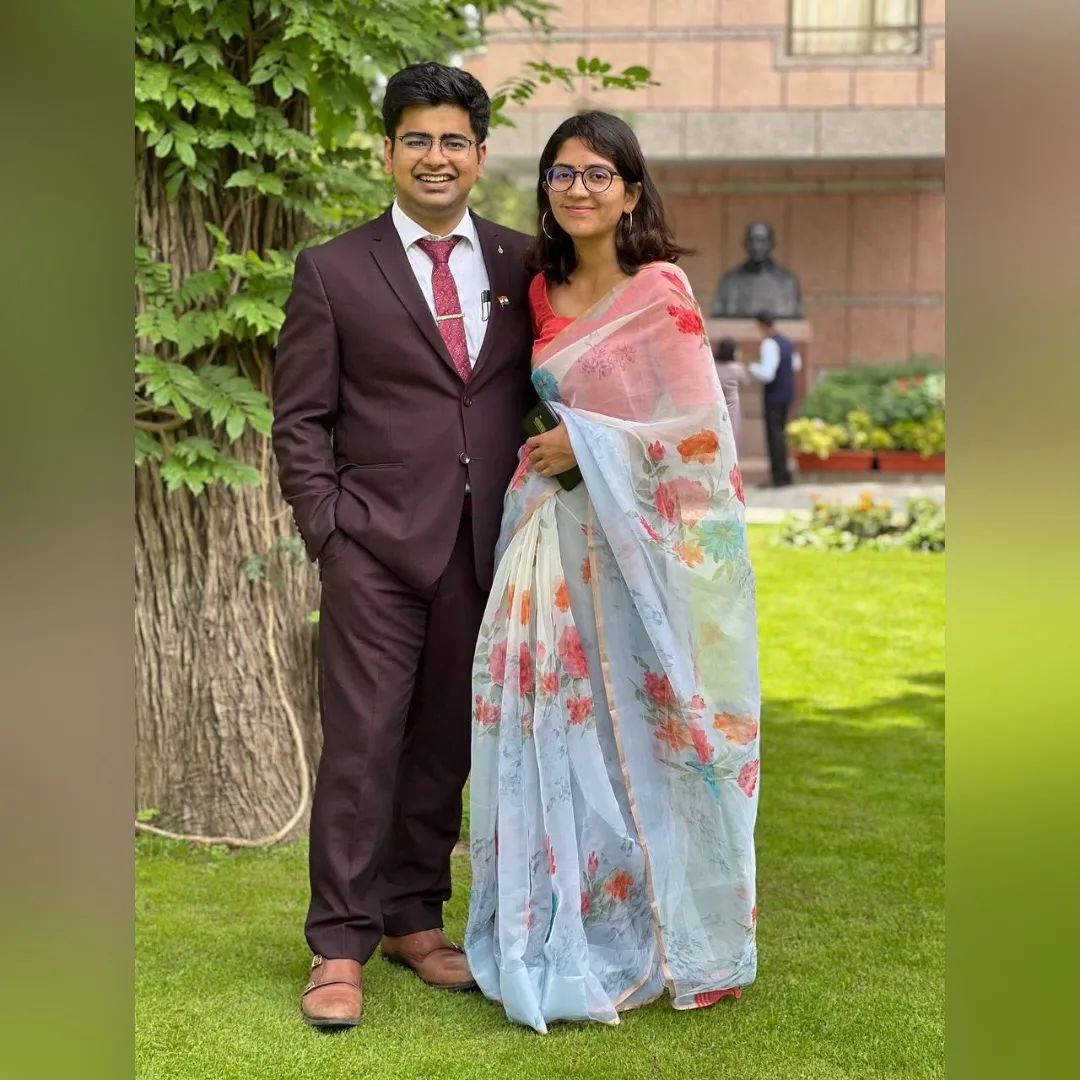
• The first movie with talking was called Alam Ara. It was made by the Imperial Film Company in 1931, and Ardeshir Irani was in charge of it.
• Dada Saheb Phalke is known as the “father of Indian Cinema” because he made India’s first full-length movie, Raja Harichandra, in 1913.
• Guru Dutt’s Kagaz ka Phool, made in 1959, was India’s first cinemascope movie.
• Raj Kapoor’s Around the World (in Hindi) from 1967 was India’s first 70 mm movie.
• The Dada Saheb Phalke Award, given by the government of India for a lifetime of work in Indian cinema, is the most important award in the Indian film world.
• The Government of India gives the Swarna Kamal award to the best movie of the year.
• Devika Rani Roerrch won the award for the first time in 1969. People call her the Lady of Indian Film.
• Adi Shankara, which was made by G.V. Iyer, is India’s first film in Sanskrit.
• Nargis Dutt was the first Indian actor to win a Padmashri Award.
• Sivaji Ganesan was the first Indian to win the French government’s Chevalier Award.
• M.G. Ramachandran was the first movie star to become the leader of a state in India.
• In 1952, India held its first International Film Festival.
• Malayalam is the first Indian film to be made in 3-D. My Dear Kuttichathan.
• Filmmakers such as Shyam Benegal continued to produce realistic Parallel Cinema throughout the 1970s, alongside Satyajit Ray, Ritwik Ghatak, Mrinal Sen, Buddhadeb Dasgupta and Gautam Ghose in Bengali cinema; Adoor Gopalakrishnan, John Abraham and G. Aravindan in Malayalam cinema; and Mani Kaul, Kumar Shahani, Ketan Mehta, Govind Nihalani and Vijaya Mehta in Hindi cinema.
Table of Contents
- 1 History of Indian Cinema
- 2 Silent films’ time
- 3 The time of talking movies and colour movies
- 4 War ruined(Ravaged) the 1940s.
- 5 Growing Up in the 1950s
- 6 The Golden Era – 1960s
- 7 The “Angry Young Man” Period: 1970–1980
- 8 Romantic films from 1980 to 2000
- 9 The Parallel Cinema
- 10 Women’s Changing Roles in Indian Cinema
- 11 Movies from South India
- 12 1952: The Indian Cinematograph Act
- 13 The Central Board of Film Certification
- 14 NFDC (National Film Development Corporation Limited)
- 15 Directorate of film festivals
- 16 The Indian National Film Archive
- 17 Children’s Film Society, India (CFSI):
History of Indian Cinema
• The Lumiere Brothers, who are known for creating the Cinematograph, took the idea of moving pictures to India. In 1896, they showed six silent short films in Bombay that kept the crowd interested. The first movie was called Coconut Fair and Our Indian Empire. It was made in 1897 by a photographer whose name is not known.Colorello and Cornaglia, two Italians, put on a show in tents at the Azad Maidan in Bombay, which is now called Mumbai. This was the start of their next big business. Then, in 1898, many short films like “The Death of Nelson,” “Noah’s Ark,” etc. were shown in Bombay.
But all of these were foreign businesses that focused on the British or their empire in India.
• Harishchandra Bhatavdekar, also known as Save Dada, was the first Indian to try making a movie. In 1899, he made two short films and showed them to people.
In the 1900s, there were not many Indian directors, but F.B. Thanawalla, who made Taboot Procession and Splendid New Views of Bombay, was one of the few who stood out. Aside from him, Hiralal Sen’s 1903 film Indian Life and Scenes was very well known.
Over time, the number of people who wanted to see these films grew, and since they were only there for a short time, there was an urgent need for a movie theatre. In 1900, Major Warwick opened the first movie theatre in Madras, which is now called Chennai. In 1907, a rich Indian businessman named Jamshedjee Madan opened the Elphinstone Picture House in Calcutta, which is now called Kolkata. Universal Studios set up the first Hollywood-based firm in India in 1916, when the Indian market was just starting to make money.
Silent films’ time
• Silent pictures were the most popular thing from 1910 to 1920. Even though they were called “silent films,” they did not have no sound at all. They had music and dance as well. Even when they were shown in cinemas, live instruments like the sarangi, tabla, harmonium, and violin accompanied them.
In 1912, N.G. Chitre and R.G. Torney were the first people from India and Britain to work together to make a silent movie. The name of their movie was Pundalik.
The first Indian silent movie was made by Dadasaheb Phalke in 1913. It was called Raja Harishchandra. He is called the “Father of Indian Cinema,” and films like Mohini Bhasmasur and Satyavan Savitri are named after him. He is also known for making Lanka Dahan, the first movie that made a lot of money at the box office in 1917.In 1918, two film companies, the Kohinoor Film Company and Dadasaheb Phalke’s Hindustan Cinema Films Company, opened. This gave the process of making films a boost. When pictures started making a good amount of money, the government put a “Entertainment Tax” on them in Calcutta in 1922 and in Bombay the following year. Many filmmakers, like Baburao Painter, Suchet Singh, and V. Shantaram, got jobs with film companies. Since this was the beginning of film in India, the directors looked at a wide range of topics. Mythology and history were the most popular topics because the stories from history and folklore appealed to the audience’s sense of a shared past. Some writers and directors also chose social issues, like V. Shantaram, who made a movie about women’s freedom called Amar Jyoti. During this time, there were not many famous women who made films.
In 1926, Bulbul-e-Paristan, which was made by Fatma Begum and directed by her, was the first Indian film made by a woman.
The movie Bhakta Vidur, which was banned in Madras in 1921, caused the first argument about control.
During this time, there were also a number of foreign partnerships. Madan’s Nala Damayanti was one of the most well-known films made with help from Italy. Himanshu Ray used Indo-German funding to make films like A Throw of Dice and Prem Sanyas, which did well at the box office.
The time of talking movies and colour movies
• Alam Ara, which was directed by Ardeshir Irani in 1931, was the first movie with talking. This movie had some memorable songs by India’s first singer, W.M. Khan. His song “De de khuda ke naam par” was the first song ever made for an Indian movie.
In the late 1930s, several big studios like Bombay Talkies, New Theatres, and Prabhat started up. They were also responsible for the Studio System.
• P.C. Barua’s Devdas was the first movie to use the studio method in 1935. The film studios started playing with the content and style of their films. This led to the creation of the first Indian colour film, Sairandhri, which was made by Prabhat in 1933 but was processed and printed in Germany. Ardashir Irani created Kisan Kanya, which was the first colour film made in India.
War ruined(Ravaged) the 1940s.
• Indian politics were a mess in the 1940s, and that was mirrored in the films made during that time.
• Movies like Dharti ke Lal, Do Aankhen Baarah Haath, etc. showed how much people wanted to be free.
• Many films, such as Chandralekha, Laila Majnu, Sikander, Chitralekha, etc., have been made about sad love stories and made-up stories from history.
• Even though India was having trouble after it got its independence, the film business was growing like crazy.
Growing Up in the 1950s
• In the 1950s, the Central Board of Film Certification was set up to control the material of the many films being made in north and south India. This was a turning point for the Indian film industry.
• During this time, “film stars” became well-known names and reached levels of fame that had never been seen before. During this time, Dilip Kumar, Dev Anand, and Raj Kapoor, known as the “holy trinity” of Hindi film, came into their own. Sohrab Modi made the first technicolour movie in 1953. It was called “Jhansi Ki Rani,” and it was made by Sohrab Modi. This was also the time when foreign film festivals started coming to India. In 1952, Bombay was the site of the first International Film Festival of India (IFFI). This also made it possible for more Indian films to be seen overseas.
Do Bigha Zameen by Bimal Roy was the first Indian film to win an award at the Cannes Film Festival. Pather Panchali by Satyajit Ray was another well-known film to win a Cannes Award.
• In 1957, Mother India was up for an Oscar in the Best Foreign Language Film category.
• Inspired by what was going on in the rest of the world, India’s government created the National Film Awards. The first one went to the movie Shyamchi Aai.
• The award for best short picture went to Mahabalipuram, which was made by Jagat Murari.
• Sohrab Modi’s picture Mirza Ghalib, which came out in 1954, was the first to win the President’s Gold Medal.
The Golden Era – 1960s
• In the 1960s, the music business became an important part of the movie business. Music became the unique selling point (USP) of a number of films.
• Some of the most famous were Jis Desh mein Ganga Behti hai, with Raj Kapoor, Guide, with Dev Anand, and Waqt, with Yash Chopra. In 1962 and 1965, there were also two wars, which became the subject of several patriotic films. Chetan Anand’s Haqeeqat, Shakti Samanta’s Aradhana with Rajesh Khanna, and Raj Kapoor’s Sangam are all good examples of this type of movie. All of these films became part of a cult.
• Once the film business was well-established, there was a need for a place where people could learn about the complicated process of making films.
• Because of this, in 1960 the government set up the Film and Television Institute of India in Pune. This school taught people how to write, direct, and act.
• Indian film and stage legend Dadasaheb Phalke died in 1969, and the Dadasaheb Phalke Award for Lifetime Achievement was created to honour him.
The “Angry Young Man” Period: 1970–1980
• This time was dominated by the need to make and direct films about young men making their way in industrial Bombay.
• The successful formula was to make “rags to riches” stories, which let people live out their goals on screen. • Amitabh Bachchan became the face of most of these films, and this period can be called the “Era of Amitabh Bachchan.” His films like Zanjeer, Agnipath, Amar Akbar, and Anthony, among others, did well at the box office.
• The famous movie Sholay, which was the first movie made on the 70 mm scale, deserves special attention. It broke all the records that had been set before, and until the 1990s, it was the longest-running movie ever.
Romantic films from 1980 to 2000
• The look of Indian films changed quickly after 1980. A lot of films were made about social problems. There were also a lot of people who went to see romantic films and family plays.
• Anil Kapoor, Jackie Shroff, and Govinda were three of the best stars during this time. They were in hit films like Tezaab, Ram Lakhan, Phool aur Kante, Hum, and many others.
• In the late 1980s, films like Baazigar and Darr gave rise to the idea of the “anti-hero,” which helped make the Khan brothers stars.
• In the 1990s, LPG made it possible for India to get new technology. My Dear Kuttichatan, which was made in the Malayalam language, was India’s first 3D movie.
• The Dolby Sound System was shown to people in India. This is a very important piece of technology.
The Parallel Cinema
• Starting in the late 1940s, the parallel industry always made hard-hitting movies whose only goal was to make good movies and play with the craft, even if they weren’t very good for business. The film Bhuvan Shome, made by Mrinal Sen in 1969, was the first film in the regional cinema to start this trend. This led to a wave of “new cinema,” which was focused on artistic quality and had a humanist point of view, which was different from the fantasy-based world of popular mainstream film.
• Parallel film started in India because of a few things. First, after World War II, the trend around the world was towards neorealism and showing how people make mistakes. This was shown in Indian films, like Mother India, Shree 420, etc., that were very good and focused on social issues.
Second, there were now a lot of places where people could study pictures, like the National Film Archive of India, which opened in 1964.
As India became a popular place for foreign film festivals, more and more Indian directors were able to learn about global film trends and use them in their own films.
• Satyajit Ray, who made The Apu Trilogy (Pather Panchali, Apur Songsar, and Aparajito), was the most famous person in the parallel film movement. These films won him praise from critics all over the world and a number of awards.
• Ritwik Ghatak was another well-known name. His pictures Nagarik, Ajantrik, and Meghe Dhaka Tara focused on the problems of the lower middle class.
• During the 1980s, women’s roles became more important in parallel film. During this time, a number of women directors became very well-known. Sai Paranjpye (Chasme Baddoor, Sparsh), Kalpana Lajmi (EkPal), and Aparna Sen (36 ChowringheeLane) were the most famous. Some, like Meera Nair, were known all over the world. In 1989, her movie Salaam Bombay won an award at the Cannes Film Festival. Most of these films were about how women’s roles have changed in our society. The next box shows how women are portrayed in films.
Women’s Changing Roles in Indian Cinema
• As times have changed, the way women are presented in films has also changed. During the time of silent films, directors focused on how hard it was for women to live their lives.
From 1920 to 1940, most directors, such as V. Shantaram, Dhiren Ganguli, and Baburao Painter, made films about women’s rights, such as the end of child marriage and sati.
Slowly, the way films were made changed, and they also started to back widow remarriage, women’s education, and the right of women to be treated equally at work.
From 1960 to 1980, the way women were portrayed in films was very stereotypical. When showing the heroine or the “ideal woman,” they praised parenting, loyalty among women, and the idea that a woman should be willing to do crazy things for her family.
Only in parallel cinema have directors with a strong desire to free women shown us what life is like for an Indian woman. Satyajit Ray, Ritwik Ghatak, Guru Dutt, Shyam Bengal, and many more are well-known artists in this genre.
The films of today are also trying out different ways to show a “modern” woman who works, has a child and a job, and is still trying to find her own way.
Movies from South India
The Tamil, Telugu, Kannada, Malayalam, and Tulu (Coastal Karnataka) film industries, along with the Tulu (Coastal Karnataka) film industry, make up the five film industries of South India. The Tamil and Telugu film industries are the largest of the five. There were a lot of films made in Telugu with mythological topics. In Andhra Pradesh, stories from epics like the Ramayana and the Mahabharata are very well-known. N.T.Rama Rao was best known for playing Krishna, Rama, Shiva, Arjuna, and Bhima.
Kannada and Tamil pictures also show stories about gods and goddesses. South Indian films, on the other hand, are mostly about social and economic problems.
• Plots about corruption, unequal power structures, and common social structures and their problems, such as unemployment, dowry, remarriages, violence against women, etc., brought these issues out of the shadows and forced people to rethink their views. In the 1940s through the 1960s, films also had political themes and were used to spread propaganda.
• Illustrative list of famous superstars include M.G.Ramachandran, N.T. Rama Rao, Shivaji Ganesan, Gemini Ganesan, Rajkumar, Vishnuvardhan, Rajinikanth, Thilakan, Prem Nazir, Mohan Lal, Kamal Hasan, Mammootty, Ajith Kumar, Chiranjeevi, Mahesh Babu, Joseph Vijay and many more.
• South Indian actors like Savitri, Jayasudha, Lakshmi, Suhasini, Sridevi, Revathy, Shobana, Soundarya, Padmini, Jayalalitha, Anjali Devi, and others are well-known.
1952: The Indian Cinematograph Act
• The Indian Cinematograph Act, 1952 was made by the Indian government to approve films. The main job of the Act was to set up and explain how the Central Board of Film Certification (CBFC), also known as the “Censor Board of India,” works.
• The Act says that the Central Government must appoint a Chairman of the Censor Board and a team of not less than twelve and not more than twenty-five people to help the Chairman do his job. • The Board has to look at the film and decide if it should not be shown because it offends a certain geographical area, age group, religious denomination, or political group.
• It can also tell the person who wants to show the movie what to do. If these changes aren’t made, the Censor Board might not let the movie be shown in public.
• The Union talks about picture certification, but it’s up to the State governments to make sure the rules are followed in their own areas. The approval is given on the basis of the following:
• The Film Certification Appellate Tribunal (FCAT) was set up by the 1952 Act, which was another important part. This was set up under section 5D of the Act. Its main purpose is to hear appeals from people who disagree with the Censor Board’s (CBFC) ruling and want it to be looked at again.
The Central Board of Film Certification
• The Cinematograph Act of 1952 led to the creation of the Central Board of Film Certification (CBFC), which approves pictures for public showing in India.
• The CBFC is a well-run company with a Chairman and a group of no less than 12 and no more than 25 people who work for it. These people are chosen by the government through the Ministry of Information and Broadcasting.
• The government says that they can be chosen for a time of three years or more. Most of the members are well-known and talented people from the film business or other fields of knowledge.
• The Ministry of Information and Broadcasting has full control over it.
Even though the main office is in Mumbai, there are many regional offices that deal with the pictures from that area. These locations are located in Delhi, Kolkata, Chennai, Bangalore, Guwahati, Cuttack, Thiruvananthapuram, and Hyderabad.
All of these places give a film its certificate, which is needed for it to be shown in movie houses.
• All videos need to have a Censor Board Certificate. Even films made outside of India that are sent to India need a CBFC approval. All films that are dubbed from one language to another must get a new licence to make sure that the change in language doesn’t make the movie any more offensive.
• The only films that don’t need a CBFC licence are those made just for Doordarshan. Doordarshan is the official broadcaster for the Indian government, and they have their own rules for looking at these kinds of films. There is no need for CBFC approval for TV shows and serials.
• In 2016, the government of India set up the Shyam Benegal Committee to make rules for film approval that took into account the best practises in different parts of the world and gave artists and creative people enough room to express themselves.
• The Committee gave their suggestions, and here are some of the most important parts of their report:
CBFC should only be a film approval body whose job is to decide if a movie is appropriate for different age and maturity levels of viewers.
The group also made some suggestions about how the board should work. For example, it said that the Board, including the Chairman, should only act as a guide for the CBFC and not be involved in the day-to-day business of film certification.
Applications can be sent online, and forms and other paperwork can be made easier to understand.
A movie should be able to be re-certified so that it can be shown on TV or for any other reason.
When it comes to putting movies into groups, the Committee thought it should be more specific. For example, besides the U category, the UA category could also be broken up into UA12+ and UA15+. The A category should also be split into groups for A and AC (Adult with Caution).
NFDC (National Film Development Corporation Limited)
• In 1975, the National Film Development Corporation Limited was set up.
• It was set up by the government of India with the main goal of planning and supporting the growth of the Indian film industry in a way that is organised, efficient, and integrated.
• In 1980, the Film Finance Corporation (FFC) and the Indian Motion Picture Export Corporation (IMPEC) were merged with the NFDC to make it a new company.
Directorate of film festivals
• In 1973, the Ministry of Information and Broadcasting set up the Directorate of Film Festivals. Its main goal was to promote good films.
• Some of the things that the Directorate of Film Festivals does are: (a) The International Film Festival of India (b) The National Film Awards and the Dada Saheb Phalke Award (c) The Cultural Exchange Programme and setting up screenings of Indian films through the mission abroad.
(d) The Indian Panorama pick.
e) Going to foreign film festivals outside of the country.
(f) Special film showing on honour of the Indian government
g) Print gathering and keeping records. These activities give India and other countries a unique chance to share ideas, cultures, and experiences in the area of cinema.
The Indian National Film Archive
• In February 1964, the Ministry of Information and Broadcasting set up the National Film Archive of India as an independent media unit with the following goals and aims.
Find, buy, and keep for the future the heritage of national cinema and build a collection of World Cinema that is representative of the world. Classify and document data related to film, do and encourage research on film, and publish and distribute the results. Act as a centre for spreading film culture in the country and making sure Indian Cinema is represented culturally abroad.
Children’s Film Society, India (CFSI):
• Founded in 1955, Children’s Film Society, India (CFSI) makes, buys, distributes, shows, and promotes children’s pictures.
















